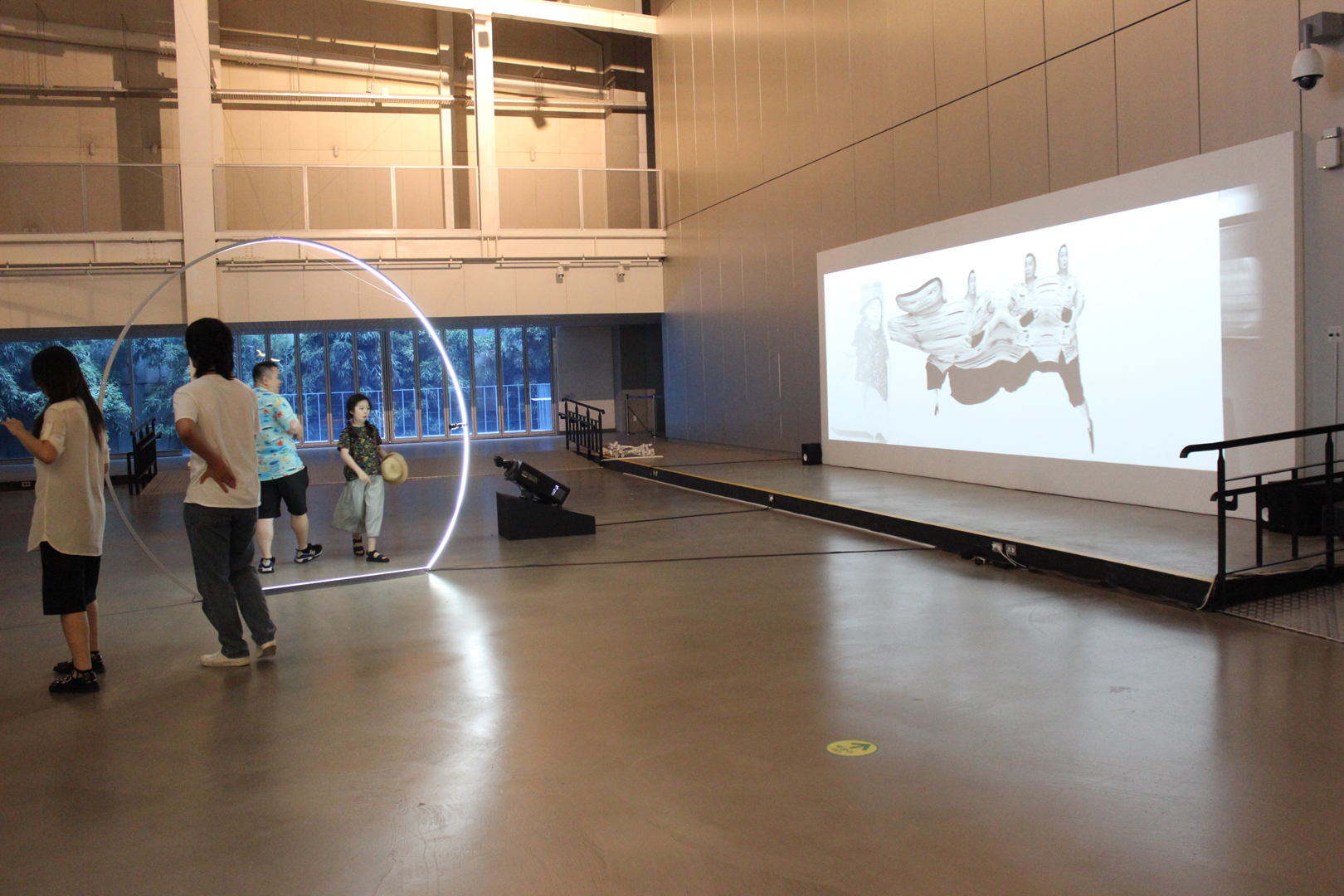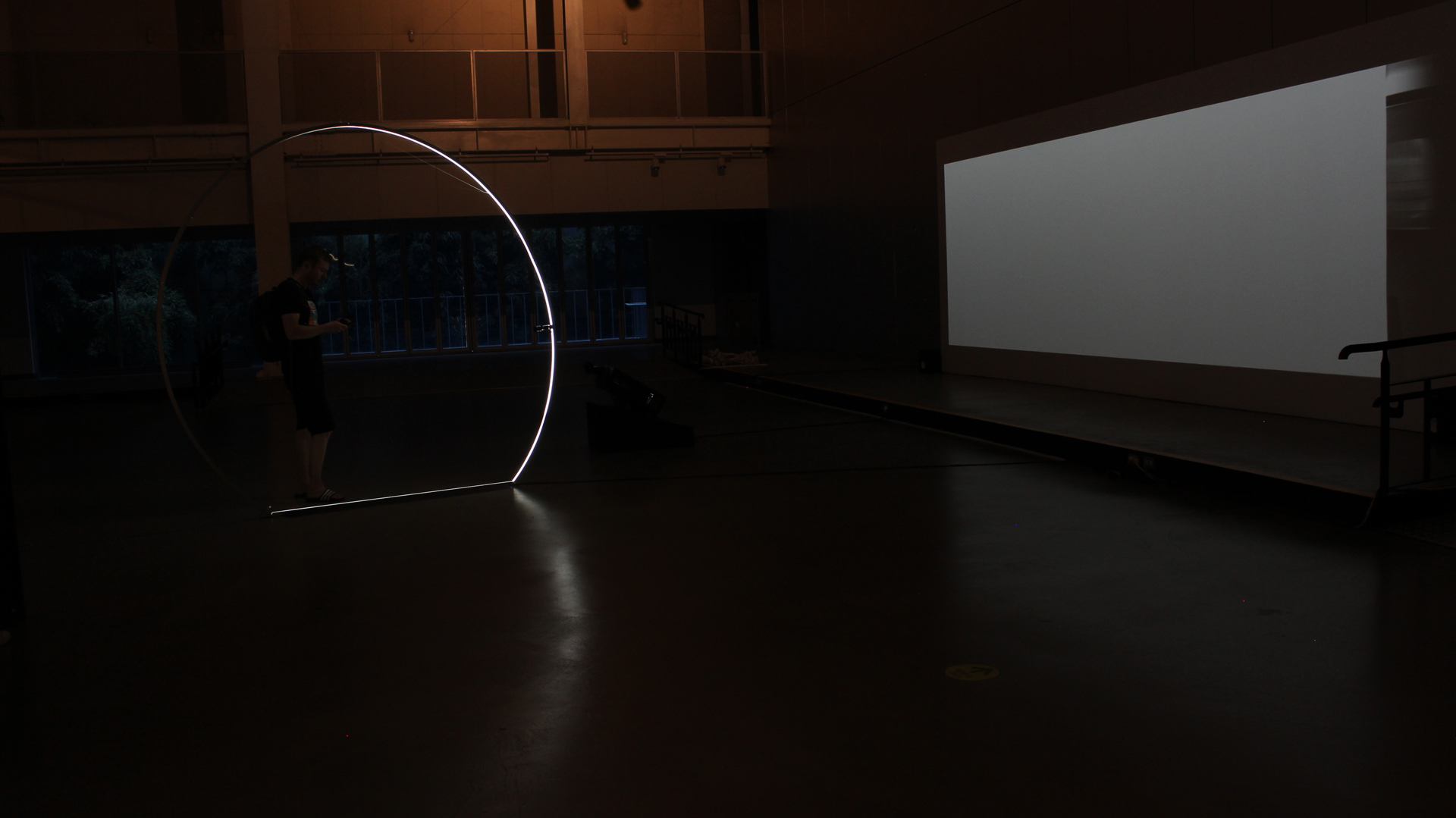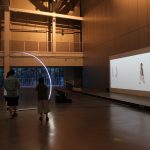Louis-Philippe Rondeau: LIMINAL
Title:
Artist(s) and People Involved:
Exhibiting Artist(s):
-
Louis-Philippe Rondeau
-
- University of Quebec in Chicoutimi (NAD/UQAC) (Université du Québec à Chicoutimi)
Symposium:
Venue(s):
Medium:
Size:
Artist Statement:
Liminal is an interactive installation that seeks to reify the boundary between present and past through a play of projected light. It employs a photographic process called slit-scan to spread out time in space. Its visual aspect stretches out time while spatiality is expressed via its audio component. Appearing as a glowing portal of light, the installation mirrors the interactor, albeit with a temporal distortion. This manipulation of time acts as a visual metaphor – the present constantly replacing the past – which is inexorably shifted into the oblivion of white light. In a sense the artwork emphasizes that light is the past
– the twinkle we see in the night sky is but a momentary snapshot of the stars’ former appearance. Light is the manifestation of events that have already occurred.
The audio component of the piece enhances the performative aspect of the experience. The intersection of the interactor within the two-dimensional space of the ring generates sound according to her spatial position. The acoustic ambiance (manipulated white noise) originating from the installation is modulated according to her vertical location, and its intensity is correlated to her physical involvement within the portal. The body of the interactor exacerbates the musicality of the work since the installation can be “played” like a musical instrument – a light Theremin in a sense.
Both of these modes of interaction are not stated explicitly to the public. The installation’s affordances require experimentation and deduction on the part of the interactor. Its physical appearance (a portal) offers clues about the manner in which it may be approached, while the narrow sliver of present time on the projected image from which emanates the past hints at the mechanism used by slit-scan photography. Likewise, the musicality of the audio component becomes self-evident through trial-and-error. The spontaneous discovery of these means of interaction becomes an important source of gratification for the interactor.
Website:
Additional Images:
- Rondeau LIMINAL
- Rondeau LIMINAL
Video:
LIMINAL – Ars Electronica 2019 from PATENTEUX on Vimeo.











